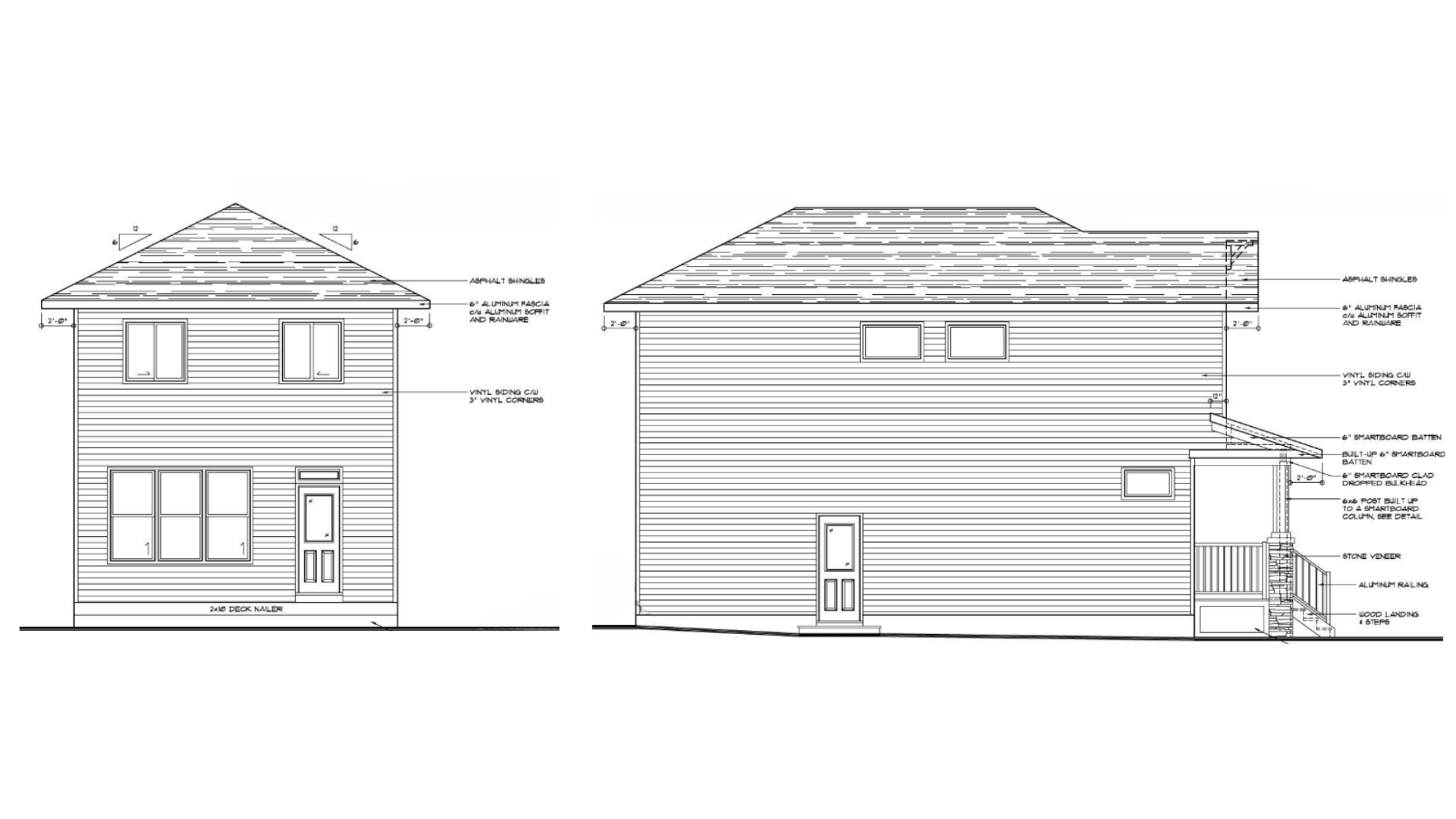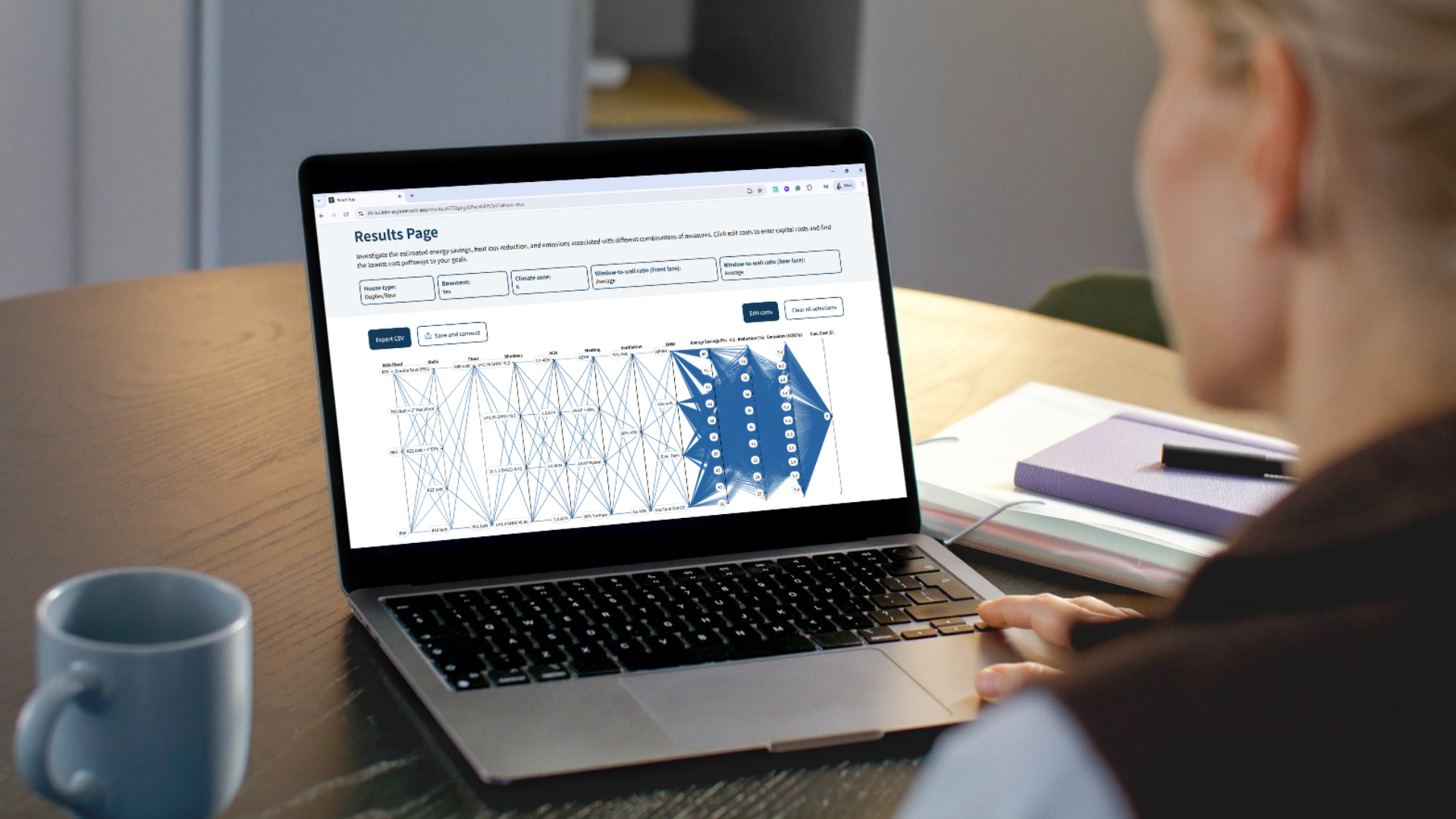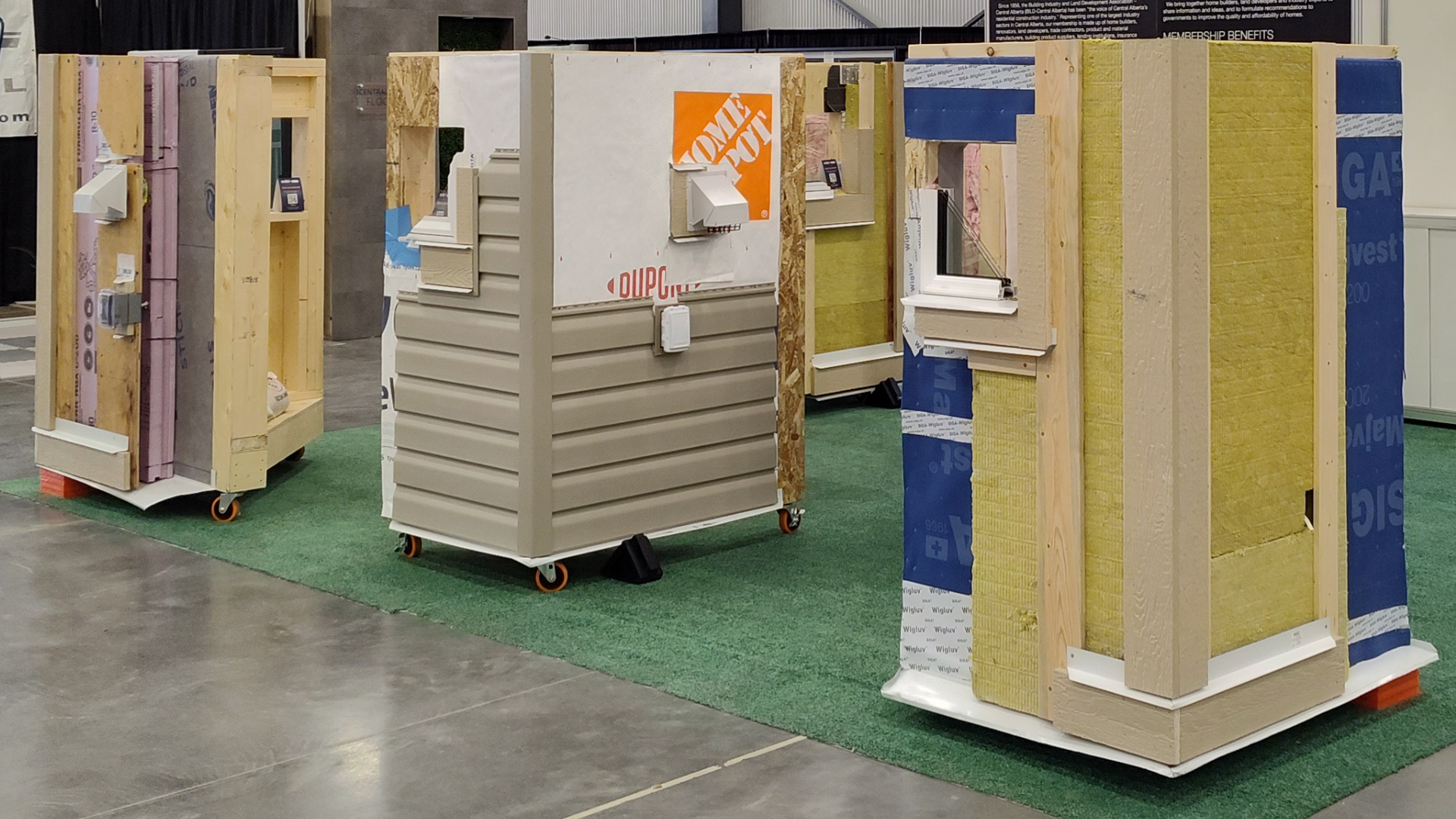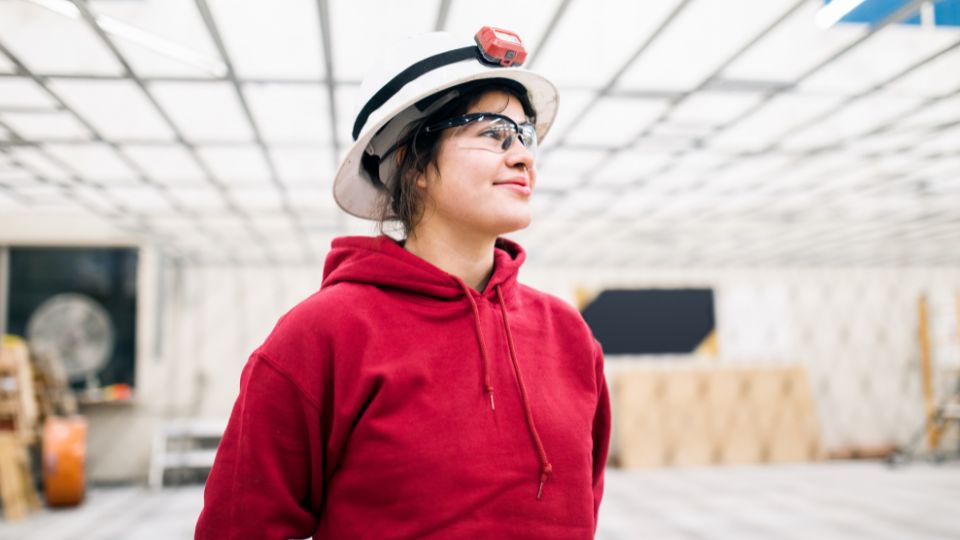How wall insulation and air tightness affect energy performance in Alberta homes
Alberta only requires new houses to meet the minimum energy performance requirements of the National Building Code—2023 Alberta Edition (NBC-AE). However, Section 9.36.7 of the code also outlines performance path options and higher energy performance tiers than the tier 1 minimum.
Alberta Ecotrust Foundation and the ENBIX initiative encourage builders and consumers to opt for better energy performance and we have resources available to help.
Energy performance tiers in the building code
Meeting each higher tier in the code requires improvements in both total energy performance and heat loss reduction. For example, tier 2 requires a five per cent reduction in heat loss and 10 per cent reduction in total energy use compared to tier 1. These values are listed in Table 9.36.7.2 of the 2023 NBC-AE.
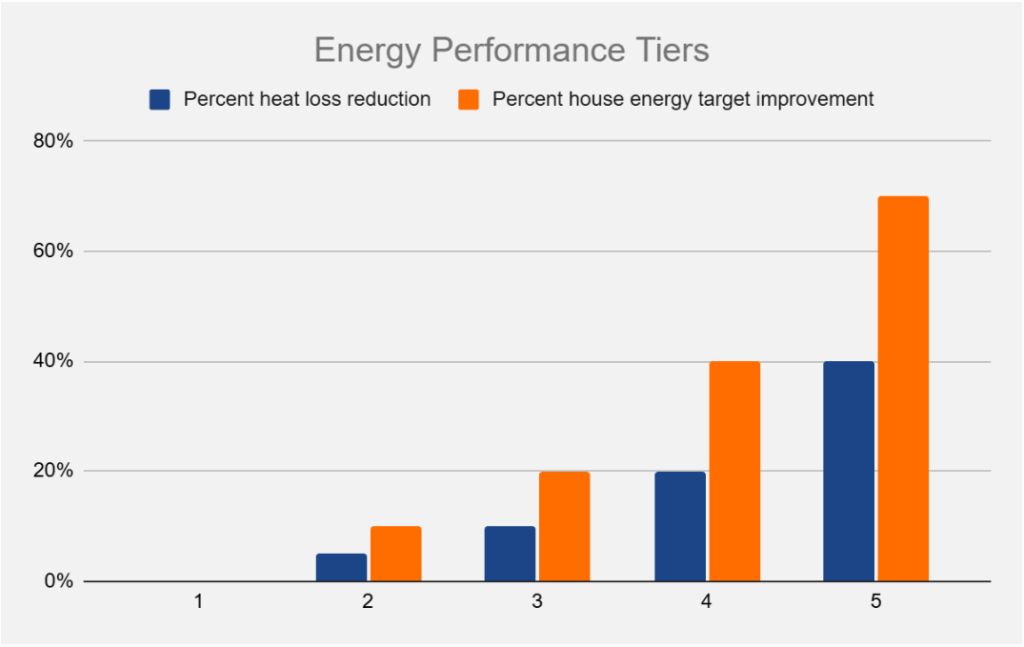
All improvements are relative to the “reference house” — a theoretical house of the same size and general shape as the house being modelled, but built to the minimum code specifications of the 2023 NBC-AE.
Energy models in the building code consider and evaluate the whole house as a system, including the basements, ceilings, walls, windows, HVAC and more. Because these all work together, it can be difficult to understand the isolated impact of upgrading individual components.
Alberta Ecotrust developed an energy model to illustrate how upgrading just one component — in this case, the walls — can improve overall energy performance. This model is based on a real house plan used in Alberta. It is a two-storey, 1440 sq. ft. home, with a detached garage and covered porch in front.
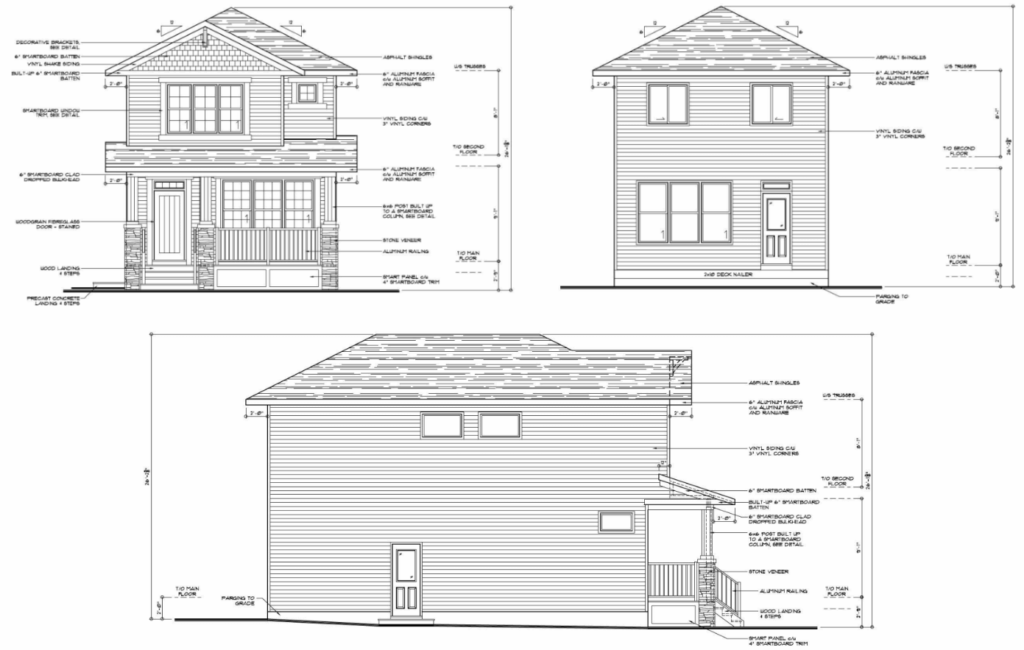
In our energy model, we changed two variables: air tightness and wall insulation. The model used real-world wall designs selected from the ENBIX demonstration wall library. See more about this publicly available resource at the end of this blog.
The main walls and the floor header insulation were changed, and the energy model was re-run. The balance of the house systems (ceiling, basements, exposed floors, slab insulation, windows and HVAC) were kept the same. The energy model was prepared in Hot2000, the industry standard for residential energy modelling in Canada. It shows the impact of heat loss through the above-grade walls. Each wall was modelled in all four climate zones (CZ) in Alberta. These are shown in the chart below, “Main Wall Heat Loss.”
Note: The majority of Alberta’s population lives in CZ 7a.
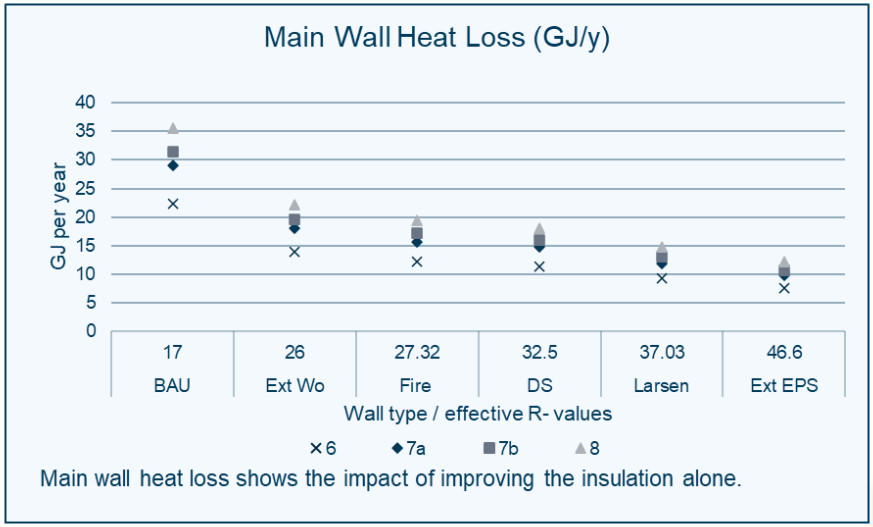
Increasing the insulation from R17 (business as usual) to R26 (Ext mineral wool) reduced annual heat loss by approximately 10 GJ per year, roughly an eight per cent reduction in total energy use.
In addition to reducing heat loss through the walls, an improvement in air tightness would be expected. The example house was also modelled at different levels of air tightness.
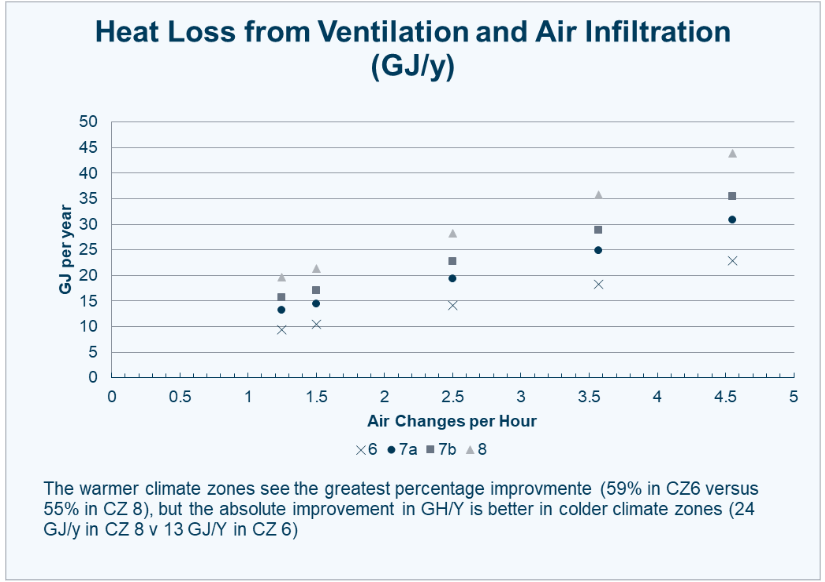
In the chart above, air tightness is reported in air changes per hour at 50-pascal pressure difference (ACH50). A lower number means fewer air leaks. This chart shows how the annual heat loss was reduced as the air tightness was improved.
In CZ 7a, improving from an ACH of 3.6 to an ACH of 1.5 resulted in a reduction of 10 GJ of heat loss per year, in addition to any reduction in main wall heat loss.
Energy modelling using the ENBIX wall library demonstrates that 16 per cent reductions in annual energy use can be easily achieved.
ENBIX ‘wall library’ and other resources
Alberta Ecotrust Foundation’s ENBIX initiative commissioned the Southern Alberta Institute of Technology (SAIT) to construct six high-performance demonstration wall assemblies. These walls showcase a variety of construction methods designed to improve energy efficiency. From this, we created a “digital wall library”; you can check out this useful tool here. SAIT’s summary report on the wall design performance is also available here.
See the ENBIX resource library for numerous additional resources related to the building envelope, including our webinars on the LEEP net-zero wall guides and high-performance windows.

